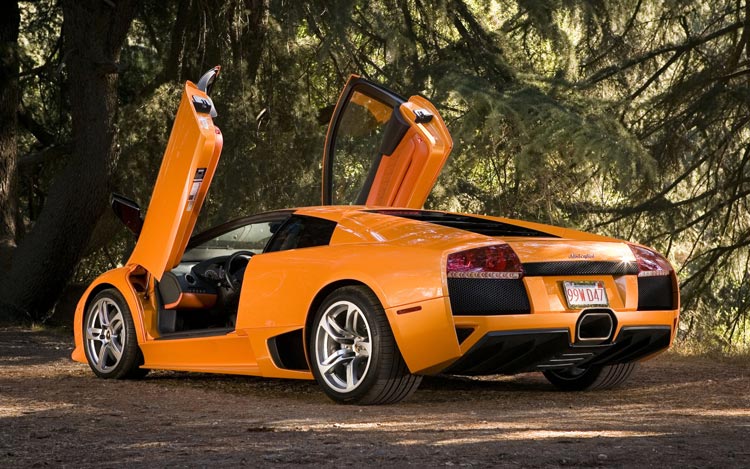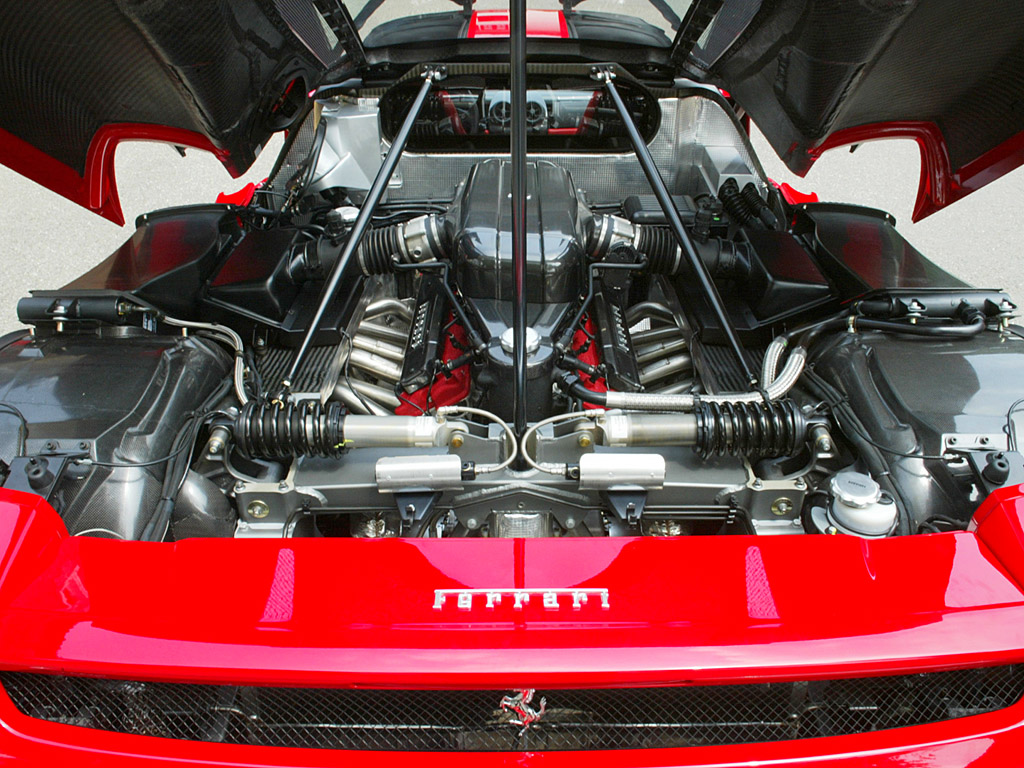Privacy Policy for http://lambhorghini.blogspot.com/
If you require any more information or have any questions about our privacy policy, please feel free to contact us by email at tattoo.tattoo.12345@gmail.com.
At http://lambhorghini.blogspot.com/, the privacy of our visitors is of extreme importance to us. This privacy policy document outlines the types of personal information is received and collected by http://lambhorghini.blogspot.com/ and how it is used.
Log Files
Like many other Web sites, http://lambhorghini.blogspot.com/ makes use of log files. The information inside the log files includes internet protocol ( IP ) addresses, type of browser, Internet Service Provider ( ISP ), date/time stamp, referring/exit pages, and number of clicks to analyze trends, administer the site, track user’s movement around the site, and gather demographic information. IP addresses, and other such information are not linked to any information that is personally identifiable.
Cookies and Web Beacons
http://lambhorghini.blogspot.com/ does use cookies to store information about visitors preferences, record user-specific information on which pages the user access or visit, customize Web page content based on visitors browser type or other information that the visitor sends via their browser.
DoubleClick DART Cookie
.:: Google, as a third party vendor, uses cookies to serve ads on http://lambhorghini.blogspot.com/.
.:: Google's use of the DART cookie enables it to serve ads to users based on their visit to http://lambhorghini.blogspot.com/ and other sites on the Internet.
.:: Users may opt out of the use of the DART cookie by visiting the Google ad and content network privacy policy at the following URL - http://www.google.com/privacy_ads.html
Some of our advertising partners may use cookies and web beacons on our site. Our advertising partners include ....
Google Adsense
These third-party ad servers or ad networks use technology to the advertisements and links that appear on http://lambhorghini.blogspot.com/ send directly to your browsers. They automatically receive your IP address when this occurs. Other technologies ( such as cookies, JavaScript, or Web Beacons ) may also be used by the third-party ad networks to measure the effectiveness of their advertisements and / or to personalize the advertising content that you see.
http://lambhorghini.blogspot.com/ has no access to or control over these cookies that are used by third-party advertisers.
You should consult the respective privacy policies of these third-party ad servers for more detailed information on their practices as well as for instructions about how to opt-out of certain practices. http://lambhorghini.blogspot.com/'s privacy policy does not apply to, and we cannot control the activities of, such other advertisers or web sites.
If you wish to disable cookies, you may do so through your individual browser options. More detailed information about cookie management with specific web browsers can be found at the browsers' respective websites.
Tuesday, April 12, 2011
Tips On Crafting A Workable Dog Fence
By the time you "know" that you need a dog containment fence, you're probably late, and your dog has gone loopy and walkabout. Local leash laws...fines...anxiety over a wandering and potentially "lost family member" are only some of the key reasons for moving proactively on a fencing for pets game plan.
Designing Plans For Dog Fence Installation. In any "dog run" home and family project, you have four (4) broad categories of planning to sort out.
1. Measuring For Optimum Size Dog Run. Size matters. Bigger is better. Dogs, from Chihuahuas to Labs, need physical activity and movement to keep them mentally and physically in balance and happy. Carefully measure, and then set aside the largest area that your property can yield. Dog run fencing based on meshed easy-to-install deer fencing opens up seriously large dimensions...meanwhile, smaller more restricted but potentially sturdier dog kennels offer a smaller-is-best alternative.
2. Identify Food, Water, Weather Protection Needs. Space, layouts, creating overhead sun and weather protection...a quiet resting zone...food...water bowls...outdoor pet bedding or blankies should all be carefully assessed before finalizing your outdoor dog fence.
3. Budgets And Costing. You've rejected the low cost single-point cable-and-leash dog run strung between two fixed points, and is at best a limited dog run option, but costs under $20. The next quality level up are dog run fencing designs based on impact-resistant deer fencing like plastic materials, giving tremendous flexibility in terms of up-and-down your property layout, and cost around $1.40 per linear foot, including fencing material, posts, and ground anchor hardware. Most robust and secure, yet highest cost are chain-metal dog kennel fencing systems, offering modular panels and integrated access gates.
4. Burrowing Underneath Or "Break Outs" Risks Minimized. By their nature, pet containment fences mean "keeping the furry guys inside". However...dogs are smart, and with time-on-their-paws they'll instinctively examine every inch of your perimeter dog fence or dog kennel, in a natural inquisitive "probe" to see if there's a weak spot, where they might dig under, jump over, or speed dial a locksmith to assist in an escape. Meaning? Think like a dog, walk every foot of your pet fencing, looking for loose soft ground and especially for pet fencing based on deer fence enclosures, making sure that your ground anchors along with rocks or other weighty objects properly seal the fence from a burrowing pet!
Modular Dog Kennels. Bomb-shelter rugged engineering is what families get when constructing a modular dog kennel. Dog kennel fencing materials can vary, but the accepted "standard" is some form of anodized aluminum chain-metal fencing. Strong? Virtually impregnable, from the outside or the inside. Aesthetically, a small "down side" factor with a dog kennel fence is that it "stands out" on your property, and lacks that eco-friendly subtlety of deer fencing which is virtually invisible except for the entrance gate.
Dog Run Fencing - Creature Comforts. Keeping pets safe, and out of mischief in terms of wandering or safety of passerby persons, is only a fraction of the planning necessary for a quality pet containment fence. A dog's age...breed...health...character and personality...and physical sensitivities to heat, cold and water are key "planning inputs" when determining the size, location and outfitting of dog run fencing.
* Water. Simple, functional gravity-fed large reservoir watering units are a must for a dog run. Clean water, up to several gallons or more, goes into the reservoir. After each drink, the unit naturally emits replacement water equal to what your dog has drunk. Reason? Hydraulic pressure.
* Shade And Rain Protection. Any outdoor pet fence must include a shade and rain protection zone...think dimensionally at around 6-foot square...tarps minimally or a more permanent hard cover construction gives a rest, sleep and weather protection safety zone.
Get More Pet Fencing Planning Tips And Dog Fence Installation Advice For Your Furry Family Members.
Please go to the following links for the latest in dog fence designs for pet containment.
Dog Containment Fencing: http://www.wise4living.com/hgfence-pet/dog-run.htm
Pet Fences: http://www.wise4living.com/hgfence-pet/
Author Robin Derry is publisher for http://www.wise4living.com/ a specialty knowledge site that gives insights and solutions on dog runs and pet containment fences, outdoor deck planter box designs, deck lighting solutions, outdoor deck railing ideas, advice on building deck stairs, home and gardening projects such as decks and deer fencing, plasma and LCD TV stand design trends, wall mount and TV ceiling mount systems, HDTV and home entertainment systems, specialty academic camps, auto tire and wheels technology trends, medical spas, technology trends, unique gift designs, technology gifts, tips for families committed to youth summer camps, body health, household, sport, travel, footwear, education, spendthrift trusts and family law legal needs, and much more.
Article Source: http://EzineArticles.com/?expert=Robin_J._Derry
Designing Plans For Dog Fence Installation. In any "dog run" home and family project, you have four (4) broad categories of planning to sort out.
1. Measuring For Optimum Size Dog Run. Size matters. Bigger is better. Dogs, from Chihuahuas to Labs, need physical activity and movement to keep them mentally and physically in balance and happy. Carefully measure, and then set aside the largest area that your property can yield. Dog run fencing based on meshed easy-to-install deer fencing opens up seriously large dimensions...meanwhile, smaller more restricted but potentially sturdier dog kennels offer a smaller-is-best alternative.
2. Identify Food, Water, Weather Protection Needs. Space, layouts, creating overhead sun and weather protection...a quiet resting zone...food...water bowls...outdoor pet bedding or blankies should all be carefully assessed before finalizing your outdoor dog fence.
3. Budgets And Costing. You've rejected the low cost single-point cable-and-leash dog run strung between two fixed points, and is at best a limited dog run option, but costs under $20. The next quality level up are dog run fencing designs based on impact-resistant deer fencing like plastic materials, giving tremendous flexibility in terms of up-and-down your property layout, and cost around $1.40 per linear foot, including fencing material, posts, and ground anchor hardware. Most robust and secure, yet highest cost are chain-metal dog kennel fencing systems, offering modular panels and integrated access gates.
4. Burrowing Underneath Or "Break Outs" Risks Minimized. By their nature, pet containment fences mean "keeping the furry guys inside". However...dogs are smart, and with time-on-their-paws they'll instinctively examine every inch of your perimeter dog fence or dog kennel, in a natural inquisitive "probe" to see if there's a weak spot, where they might dig under, jump over, or speed dial a locksmith to assist in an escape. Meaning? Think like a dog, walk every foot of your pet fencing, looking for loose soft ground and especially for pet fencing based on deer fence enclosures, making sure that your ground anchors along with rocks or other weighty objects properly seal the fence from a burrowing pet!
Modular Dog Kennels. Bomb-shelter rugged engineering is what families get when constructing a modular dog kennel. Dog kennel fencing materials can vary, but the accepted "standard" is some form of anodized aluminum chain-metal fencing. Strong? Virtually impregnable, from the outside or the inside. Aesthetically, a small "down side" factor with a dog kennel fence is that it "stands out" on your property, and lacks that eco-friendly subtlety of deer fencing which is virtually invisible except for the entrance gate.
Dog Run Fencing - Creature Comforts. Keeping pets safe, and out of mischief in terms of wandering or safety of passerby persons, is only a fraction of the planning necessary for a quality pet containment fence. A dog's age...breed...health...character and personality...and physical sensitivities to heat, cold and water are key "planning inputs" when determining the size, location and outfitting of dog run fencing.
* Water. Simple, functional gravity-fed large reservoir watering units are a must for a dog run. Clean water, up to several gallons or more, goes into the reservoir. After each drink, the unit naturally emits replacement water equal to what your dog has drunk. Reason? Hydraulic pressure.
* Shade And Rain Protection. Any outdoor pet fence must include a shade and rain protection zone...think dimensionally at around 6-foot square...tarps minimally or a more permanent hard cover construction gives a rest, sleep and weather protection safety zone.
Get More Pet Fencing Planning Tips And Dog Fence Installation Advice For Your Furry Family Members.
Please go to the following links for the latest in dog fence designs for pet containment.
Dog Containment Fencing: http://www.wise4living.com/hgfence-pet/dog-run.htm
Pet Fences: http://www.wise4living.com/hgfence-pet/
Author Robin Derry is publisher for http://www.wise4living.com/ a specialty knowledge site that gives insights and solutions on dog runs and pet containment fences, outdoor deck planter box designs, deck lighting solutions, outdoor deck railing ideas, advice on building deck stairs, home and gardening projects such as decks and deer fencing, plasma and LCD TV stand design trends, wall mount and TV ceiling mount systems, HDTV and home entertainment systems, specialty academic camps, auto tire and wheels technology trends, medical spas, technology trends, unique gift designs, technology gifts, tips for families committed to youth summer camps, body health, household, sport, travel, footwear, education, spendthrift trusts and family law legal needs, and much more.
Article Source: http://EzineArticles.com/?expert=Robin_J._Derry
Monday, April 11, 2011
Sunday, April 10, 2011
Saturday, April 9, 2011
Lamborghini Engine Wallpaper

lamborghini engine wallpaper
Friday, April 8, 2011
How to Find the Right Dog School for Your Dog
Has a new puppy recently become a member of your family? Puppies are born with instincts, but not with the knowledge of how to behave. Therefore, it is necessary to teach your new puppy appropriate behaviors and also some fun tricks. You can try to do this yourself or you can enlist the help of a dog school.
There are many different types of dog schools available. What dog school would be the best for your dog? Things to consider when searching for a dog school include: the age of your dog, the breed, the personality, and what it is that you want your dog to learn.
Let's focus first on what you want your dog to learn. Do wish to have your dog learn basic obedience commands such as "sit" and "stay"? Do you want to learn practice drills you can do with your dog at home such as keeping them from begging for food at the dinner table? Then local dog schools will best meet your needs.
Local dog schools can be found at community colleges, city recreation centers, through pet stores, and even through private dog schools. You can opt to take a group class with up to twenty other dogs. These types of dog schools are often less expensive and meet in a local park. They meet once or twice week for a few weeks. You can have fun teaching your dog new commands as well as let them socialize with fellow dogs.
Local dog schools can offer more advanced dog training classes as well. Perhaps your dog has mastered the basic commands and you want to teach them how to hold a piece of food on their nose for a specified amount of time and then flip it into their mouth. You can find dog schools that have fun, exciting advanced classes where you and your dog can bond.
You may consider having your dog compete in dog shows. Maybe you purchased your dog from an established breeder that has determined your dog has champion DNA in their pedigree. If so then you should look into more in depth dog schools that are focused specifically and dog handling/showing. You can find these through breeders and the American Kennel Club. You can search for dog training materials and resources on the American Kennel Club website at:http://akc.org/
On a different note, maybe you want your dog to become a service dog or guide dog for the blind. Dogs that perform these jobs have to go to specific guide dog training schools. These special dog schools are necessary because there are very detailed requirements and commands that a guide dog must learn. These types of dog schools will also provide the support, knowledge, and training necessary to make your dog a successful guide dog.
There are many guide and service dog schools around the world to train your dog. You can find these schools through your breeder, groomer, and veterinarian. You can also find information about these dog schools through the Internet. A comprehensive listing is available by Wolf Packs - List of Service Dog Schools and Information. You can find this on their website at: http://wolfpacks.com/serviced.htm/
Once you have determined what you want your dog to learn then you can narrow down your search of dog schools by taking into account your dog's age, personality, and breed. Do you have a young puppy that is large like a Great Dane? Or do you have tiny new Bichon Frise that weighs in at only 4 pounds? Find out the type of dogs that are allowed into the dog training class.
Will the dog training class be filled with many large dogs that might scare your little Bichon Frise? Or are there dog classes available that are separated by age and weight? It is a good idea to be aware of this information before you sign your dog up for classes. You want to provide them the best experience possible and not have them cower when it is time to head to dog class each week.
Another consideration when choosing between dog schools is the amount of one-on-one attention. Is your dog very active and can't sit still during group training sessions? Many dog schools offer private classes. Sometimes the dog trainer will even come to your home to give you and your pooch lessons.
Picking among dog schools is also reliant upon the price and schedule flexibility of the classes. Run a price and schedule comparison on dog schools in your area. This will help you to discover a dog school that fits your schedule, your dog's personality, and meets your budget.
Choosing between dog schools is an important decision that will set your dog on the path to obedience success. Take your time and choose wisely so that both you and your canine buddy have a memorable, enjoyable dog training experience.
Visit the dog website to research dog breeds & get free tips on dog training, dog health, dog grooming & how to find dog sitters & dog walkers.
Article Source: http://EzineArticles.com/?expert=K_Brandt
Thursday, April 7, 2011
LAMBORGHINI Murcielago LP670-4

LAMBORGHINI Murcielago LP670-4
Wednesday, April 6, 2011
Tuesday, April 5, 2011
The Murci�lago Was Introduced

The Murci�lago was introduced
Monday, April 4, 2011
Black Lamborghini Murcielago

Black Lamborghini Murcielago
Sunday, April 3, 2011
[9] Lamborghini Also Presented
![[9] Lamborghini also presented](https://blogger.googleusercontent.com/img/b/R29vZ2xl/AVvXsEhIfv5cVDYuIYkUikC1_0XetzcnJDnCWtWgR-I4e_V0wA6Yofdop2dohyphenhyphent0bww_OXYowxflaQmv-Zce7rpUuAwns0wDIC7VCHHdp-1HZNC2tk4pMgqm_S6jaRoaZb7uF2-XjOicAhwP1pvA/s1600/2007-lamborghini-murcielago-lp640.jpg)
[9] Lamborghini also presented
Saturday, April 2, 2011
Lamborghini Murcielago Tuning

Lamborghini Murcielago Tuning
Friday, April 1, 2011
The New Lamborghini Murci�lago

The new Lamborghini Murci�lago
Superleggera 2010 Lamborghini

Superleggera 2010 Lamborghini
Lamborghini Murcielago Lp640

lamborghini murcielago lp640
Thursday, March 31, 2011
Lamborghini Murcielago Lp640

Lamborghini Murcielago lp640
Wednesday, March 30, 2011
Lamborghini Murcielago Lp640

lamborghini murcielago lp640
Tuesday, March 29, 2011
Lamborghini Murcielago LP640

Lamborghini Murcielago LP640
How to Prepare Your Dog for Your Newborn Baby
If you are like much of the population, your four-legged friend is your first "baby." Many people worry needlessly about how their dog will handle a baby in their life. Many owners think of getting rid of the family pets because of fears that they will harm the baby. Please do not do this unless there is no other option. Most dogs, when treated and trained properly, can handle life with a newborn very well.
Children and pets make wonderful companions when raised properly together and taught how to behave with each other. Children that grow up in a home with pets learn respect and love for animals, and more importantly, respect for life. As the children grow older they can learn responsibility by helping to care for the animals. Animals enrich our and our children's lives beyond belief.
Having a baby can cause problems for both humans and dogs, as the dog tends to be treated differently, and because of this, may act differently. Some owners baby the dog more, causing the dog to become spoiled and hard to handle. Other owners get over-stressed and punish the dog for normal, curious behavior toward the baby. Often our pets are the center of our world, our "babies" if you would, and can get "jealous" if not equipped to handle losing that status to the new baby. If you are willing to make the time and effort to prepare your pets for the new arrival, everyone can live in harmony.
Sometimes the dogs become overprotective of the baby. Many owners enjoy and even prefer the dog being a guard for the baby. While it is normal for the dog to become protective of the baby, it is dangerous for the dog to become overprotective and not let anyone near the baby. All of the above scenarios can lead to the dog being kicked out of the house!
As you are making preparations to bring home baby, you need to prepare your dog(s) for the same in advance if possible. While most dogs will be very gentle with the baby, many dogs do not see babies as humans because of their size, smell, and the strange noises they make. By taking the time to give your dog some extra love and attention he should be fine and not turn to bad behavior to get your attention. You need to prepare and educate your dog for what lies ahead. This will ensure that they are ready and willing to accept the new family member with open and loving paws.
Using calming remedies (herbs, aromatherapy, oils) and or prescription medications are also an option to help facilitate a better behaved dog. You can talk to your veterinarian to inquire about these products and the implications associated with their use. I am a believer in the holistic approach whenever possible, instead of using drugs.
Please, please always be aware that your dog is an animal and animals can bite or do harm to a baby, intentionally or unintentionally. No matter how well-behaved or loving your dog is NEVER LEAVE YOUR DOG ALONE WITH YOUR BABY! I cannot stress this enough. Accidents can happen. You do not want to harm your baby or have to get rid of your dog because of an unfortunate, and possibly avoidable, incident.
If you are unsure that your dog will accept your new baby, please seek the advice of a professional trainer or behaviorist before making any decisions.
Believe it or not, your behavior with, and toward your dog matters. It can make or break your dog's acceptance of and respect for your baby. If you act like a leader, you will be treated like a leader. You want your dog to respect every human being in your household, including your baby. You must teach your dog respect for the baby. This will make life easier for all those involved.
Be firm but fair-
Do not let your dog get away with things, but don't be a drill sergeant either! Try to make any corrections as gentle as possible, but make sure they are effective. Try to have fun with your dog and the training - you both need to enjoy it or neither one will want to continue!
Your tone of voice matters-
DO NOT YELL at your dog! Convey the meaning of the command through the tone of voice - match your voice to what you are telling your dog. Commands should be short and succinct, in a low, almost growling voice. Your voice should not get higher as you give the command. Do not sing to your dog or ask the dog a question! You will not get the answer you want! When giving praise, sound like you mean it! It should be the opposite of a command - higher pitched and enthusiastic. If your dog gets overly excited when you praise him, tone it down a bit and speak softly. Your dog will still understand that he is doing a good job, but he will be less likely to jump around and be crazy.
Be calm and assertive-
Our dogs feed off of our energies and emotions. This affects their behaviors and reactions. If we are relaxed and confident, our dogs will feel the same, and know that we are LEADING them, and they do not have to lead us.
Use a crate-
If your dog does not already use a crate, now is the time to start. A crate is not cruel, it can actually be a wonderful and safe place for your dog. Confining your dog at certain times, such as for sleep or times when you cannot supervise, is no different than putting your baby in its crib for the same. It is actually very easy to teach your dog to accept being in the crate. Most people think that a dog who has not used a crate before will have a hard time, but that is not usually true. My two older dogs started using the crate when they were 7 and 8 years old, about the time my son started crawling and exploring on his own. This allowed me to know that both my child and my dogs were safe and nothing bad could happen. Your child can be hurt by your dog as easy as your child could hurt your dog. The problem lies in the fact that if the dog makes even the slightest threat to your baby or even inadvertently hurts your baby, it is your dog's fault. It is not fair to the dog for something like that to happen because you were not supervising the two together at all times!
Eliminate bad manners-
Bad manners cannot be accepted as they can be dangerous to a new baby and a new mom. Jumping and nipping are behaviors that need to be stopped right away. Stealing and rough-play also need to be nipped in the bud immediately.
Teach your dog how to be calm and gentle, by praising and treating this behavior.
Working commands into everyday life and play makes listening easy and normal for your dog. It becomes natural to the dog and it is less-likely that your dog will be out-of-control. It is also good for you too, as it makes sure that you are training your dog everyday, making you the leader - not the follower.
Exercise is key for good behavior-
As I stated earlier in the guide, exercise is imperative for your dog. This ensures that your dog will be better behaved because it doesn't have the energy to misbehave! Regular walks are important. If you do not have the time to walk for miles, using a doggie backpack can make a short walk seem like a long walk for your dog. A dog backpack immediately puts your dog into work mode, which will help to tire her brain. If you evenly balance some weight on each side, such as water bottles, it will further the amount of physical energy that is expended by your dog. Teaching your dog to walk nicely next to the stroller is also important. It is very difficult and dangerous to have a dog pulling and out of control while trying to maneuver a stroller. If you plan to use a baby carrier, sling, backpack or car seat your dog needs to behave on the leash and walk with you, not pull you. It is a good idea to practice with the equipment before baby comes (use a doll in place of the baby) so that you can work out any kinks or problems.
Have regular obedience sessions with your dog so that she does not forget her commands and remembers that she has to listen at all times. This also helps to tire her brain! Try to work the commands into everyday life so that it becomes second nature to her.
Is your dog allowed on your furniture?-
If your dog is currently allowed on the furniture you may want to reconsider this as your baby will likely be on the furniture a lot. Dog hair and dirt can irritate your baby. You also don't want to have to constantly clean up after the dog. Your dog could also inadvertently injure the baby jumping up on the furniture or repositioning himself. It's best to restrict access to the furniture so that problems do not occur.
Time-out for your dog-
Be sure you give your dog time away from the baby to settle. Time outs are an effective tool to allow your dog to keep its sanity and also for when they are doing something wrong.
Your new schedule and your dog-
It is time to readjust the dog's schedule to acquaint her with the upcoming changes. Think realistically about the time you will have for the dog for things such as walks, feeding, potty breaks, play and attention. Try to keep the schedule consistent for your dog so that she does not feel unnecessary stress from the changes that are happening before your baby arrives. Having as little disruptions as possible will help to accomplish this goal. Once your dog feels secure and is used to the new routine, try to start having slight variations in your daily happenings. When your baby arrives things do not always go as planned. You can have every intention of staying on schedule and inevitably something will change that schedule! Babies do not follow schedules! Do try to stay on schedule, when possible, so that your dog is allowed some semblance of a routine. Dogs feel safety when the rules and routines stay the same.
Pay less attention to your dog-
It is now time to teach the dog to expect less attention from you in one sitting. Once the baby arrives you will not have the same amount of quality time to spend with your dog, but it is still essential to make time for your dog. Schedule regular 5 to 10 minute sessions each day where you pay full attention to your dog. You can do things such as play, grooming, petting or just talk to your dog. This allows your dog to understand that he is still an important part of your life. You need to teach the dog that this time may be with or without the baby. This is also a good time for you to relax and unwind as pets are very therapeutic. Be aware that if you have more than one pet, each will need individual attention if possible. You can also give the pack the attention at the same time, providing they get along, or allow them to play together to burn energy.
Your dog needs to be calm and balanced-
You need to make sure that your dog is calm and balanced before baby comes into the house. It is very important for your dog to learn how to be calm so that he does not hurt you or the baby. Your dog needs to be balanced so that he does not stress needlessly and act out inappropriately. If your dog is not calm and balanced there are ways to help you accomplish this. Training and exercise are good places to start to achieve a calm and balanced dog. If these do not work your dog may have something wrong with him, such as a mental or physical problem. Consult with your vet and local canine behaviorist or trainer. They should be able to steer you in the right direction. They can help advise you of the route you should take, whether behavior modification, medication, or holistic remedies.
Is your dog gentle?-
Teaching your dog how to be gentle is extremely important so that he will not inadvertently hurt the baby. Many dogs use their teeth too much and need to be taught the proper way to use their mouths - without the teeth!
Does your dog jump?-
If your dog is a jumper, teaching proper greetings will help to curb this problem. It is vital that your dog can see people without jumping or getting overly excited. When the baby comes home there will probably be lots of people visiting and he will need to be on his best behavior. It also facilitates the proper, gentle behavior your dog should have around the baby.
How will my dog handle the baby being rough with her?-
Teaching your dog what to physically expect from your baby is extremely important so that she is able to cope with and know what to do when baby pulls, hits or pushes her. Infants and children are not necessarily gentle by nature, and have to be taught how to be so. Your dog also needs to learn how to deal with these behaviors from his small leaders. Start to gently handle your dog in a rougher fashion while praising good behavior and gently, if possible, correcting inappropriate behavior such as nipping or mouthing. Children tend to pet roughly, pull ears and tails, put their hands in the dog's face and touch sensitive areas on the dog. You need to mimic these behaviors in order to teach your dog what to expect and how to deal with it appropriately. Make it a daily habit to have time on the floor with your dog touching every part of his body in a loving fashion. This is good because it allows the dog to accept touch in areas that it may not want touched. It also teaches the dog to be gentle while on the floor and to be submissive to you and your baby. Do this slowly and your dog will understand
Obedience training your dog-
Your dog needs to be obedience trained and have basic manners. I suggest that you enroll in a training class if you can. Check your local training clubs, or facilities, for classes and make sure to observe a class so that you can see how they train. Make sure that you are comfortable with their techniques and the instructors. If you are not allowed to observe a class, please look elsewhere. Trainers who are legitimate should have no problem with this and encourage you to do so.
The following are some basic commands and actions that your dog should be able to do to ensure that he will listen and be under control:
* Walk nicely on a leash
* Sit
* Down
* Stay
* Leave-it
* NO
* Understand boundaries
* Quiet
* Attention/Look
* Drop-it
* Go to Your Spot/Place
Teaching the dog to respond to hand signals will also be beneficial. A sleeping baby is less likely to get woken up if you are not talking.
It is also a good idea to teach your dog to accept wearing a leash - in and out of the house. This ensures that you have control over your dog and tends to help make the dog better behaved. Most towns and cities have leash laws so it is imperative that your dog get used to the leash. You should also walk your dog everyday. This gives your dog mental stimulation, as well as physical exercise, which helps to tire them out, thus making them less likely to get into trouble and an overall better behaved dog.
Spot, Go To Your Spot!-
The "Go to Your Spot" command is a great command to have in your arsenal for a well-behaved dog. You can use this exercise to allow your dog to be with you and not underfoot, or keep your dog at a distance and still know where he is and what he's doing. It teaches your dog to go lie down on a rug or blanket and stay until released.
Long down stays are important in general, whether or not he is "in a spot", because they help you to maintain control over your dog. By your dog having to work for you, it facilitates a relationship in which you are dominant (in charge or the alpha figure) in your and your dog's mind.
Teach your dog what he can chew on-
All dogs chew. Each has a specific reason for it, and has a physical need to chew. They need to chew to exercise their jaws as well as to let out pent up frustrations. Excessive chewing can also be a breed trait. To help avoid problems, do not set yourself up for failure.
Soiling in the house-
If your dog has an accident in the house, or is not housetrained, you need to clean it properly to avoid further "accidents" or remarking of the same areas and to maintain a sanitary environment. Dog feces can contain parasites and other unwanted disease. Giardia, E-Coli, other worms and parasites are sometimes present in the feces and many are transferrable to humans.
Use high-value treats-
Use treats of high value - treats your dog loves and doesn't normally get - when dealing with new baby sights, sounds and scents. This tells your dog that these are good things, and that he should like them and associate them with rewards, instead of feeling malice or fear towards them. Make sure to keep the treats special, and only use them for the purposes of getting your pup familiar with what the new baby will be like.
The health and cleanliness of your dog is vital-
It is essential that your dog has a clean bill of health and is clean before you bring your baby home. Take your dog to the vet for a check-up to make sure that he has no health problems as these can cause unwanted behaviors in your dog that will interfere with his life with your baby. Make sure that he is up-to-date on all shots, or that his titer levels are good, and that he is worm-free.
The next thing you need to make sure of is that you bathe your dog or have him groomed BEFORE the baby comes home. If your dog sheds, it is a good idea to start a de-shedding program, such as regular grooming and adding a product such as Linatone (which you can obtain at your local pet store, online or at some groomers) which has a special combination of oils to help the skin and coat. Be careful not to over-bathe your dog as this can cause skin problems in many dogs. Make sure that he has no fleas or ticks as this is unsanitary and can expose your baby to health problems. It also creates problems as you will not have much time to bathe him once the baby is around. Using special flea and tick medication will help to ensure that he remains flea-less and tick-less.
Start teaching your dog to accept his paws and body wiped when he comes in from outside will aid in reducing the amount of dirt he tracks in the house. It also reduces the chance that your dog will carry in something that will cause an allergic reaction in you or your baby
Also, make sure to vacuum or sweep regularly as dog hair accumulates fast. This is especially important once your baby starts to crawl or be on the ground a lot, unless of course you want the baby to be a human Swiffer!
Carry a doll-
The idea of carrying around a doll (preferably one that cries) may seem silly, but it is a very good way to get your dog used to an addition to the family. Everything is different with a baby. Holding a baby changes your posture, and your mannerisms, so your dog needs to be comfortable and accepting of this. The dog also needs to follow commands and be obedient when you have the baby or the baby is out and about. Using a doll while practicing everyday commands will help your dog respond better when the baby arrives. Take the dog for walks, play with the dog, and all the normal things you do with your dog with and without the baby equipment and doll.
Baby sounds-
Getting your dog used the sounds of a baby is also a good idea. This allows your dog to familiarize herself with the alien noises that it may not have heard before so that it is not a surprise when baby comes home. Things like crying, gurgling, yelling/screaming, and baby babble are not necessarily normal for a dog to hear. There are many cds and tapes that you can purchase for this purpose. Start the volume low and expose your dog for short periods of time at first. Gradually increase the volume and amount of time you play the sounds. Try to play the recording everyday until the baby arrives.
Real babies and children-
Another good idea is to expose your dog to the real thing - real babies and children. If you have friends or relatives who have babies you can ask if they will allow your dog to listen in or even record them for you. You can visit places like parks, if your dog is well-behaved, so your dog can hear all of the noises children make. Make sure to start this away from your house so that your dog does not feel threatened in her own territory. The next step is to expose your dog in your yard, and then in your house. Make this a gradual process so your dog can slowly accept it.
Baby smells-
The smells of a baby are often unfamiliar to a dog. Slowly start to get your dog used to these new smells by using the products you will use on your baby, such as baby oil, powder, baby wash and diaper cream. Putting these products on baby blankets and baby clothes will also help. If you have friends or relatives that have babies, ask to borrow used and unwashed blankets and burp cloths so that the dog can get accustomed to the real smells of a baby.
The Nursery-
Setting up the nursery allows your dog to become acquainted with changes in the house. It allows your dog to become comfortable with the sights and sounds associated with baby equipment, thus avoiding shock when baby arrives.
If you don't want your pup in the nursery you need to start restricting access now. Keeping the door shut or a baby gate in the doorway helps to achieve this. Your dog will not feel left out or anxious about no longer being allowed in that room. Another good idea is to put a dog bed outside of the nursery so that your dog is still close to you, but not in the room. He will not feel banished, but will feel more included. Spend time in the room without your pooch so he understands that this will be normal, and that it is no longer his territory. As he starts to understand that the room is no longer his, he will accept it and be less likely to try to get in there when the baby comes home. This also helps to keep the room clean and free of dog hair and dirt. You will have more than enough to clean in the nursery as it is!
If you plan to allow your dog in the nursery start to teach the proper behaviors as soon as possible. Train her to be calm in there and not to jump up on the furniture and baby equipment. It is also a good idea to teach her to do down-stays when in the nursery so that she is allowed to be with you and the baby, but is out of the way and behaving. You may also want to have a bed or rug in there that your dog is allowed to lay on (remove it when you and the dog are not in the room). When the baby starts to crawl and move about you may want to limit the amount of time the dog spends in there and never leave the baby alone with the dog.
Baby's things are off-limits-
Make sure to constantly reinforce that the baby's things are not the dog's things. Even though you may have practiced this before the baby came home, dogs do need reminders.
It is important to dispose of dirty diapers properly to ensure that your dog does not get them. Dogs love things that have human waste on them, such as dirty diapers and feminine products. Keep these products out of reach as they will make an awful mess and are very unhealthy for your dog to ingest. They have chemicals that are not good for your dog and can cause blockages. Besides, the consuming of human waste can also make your dog sick (and have disgusting breath!).
Teach your dog to leave baby blankets alone and not to lay or step on them. Lay them on the furniture and the floor to teach your dog that they are off limits. If your dog tries to walk or lay on them use a firm "NO" and redirect your dog to a proper spot and have him lay down. When your dog avoids these on his own, praise him for his good behavior with a treat or petting and he will understand that these items are not something to go near. You want to prevent possible injuries to your baby from your dog while baby is lying on or hiding under the blankets (as often babies do!).
Teach your dog which toys belong to him-
It is recommended to teach your dog what toys are his and what toys are the baby's before baby arrives so that you will not have problems after. This is also a good idea because you can purchase toys similar to what your baby will have and not worry about using baby's actual toys for these exercises. An easy way to do this is to use peanut butter (or something like it such as cream cheese or cheese spread) and bitter apple (you can purchase this online or at pet stores). Put bitter apple on the baby's toys and peanut butter on the dog's toys. Before you give your dog the choice about which toys he wants, take a little bitter apple on your finger and wipe it around in your dog's mouth. This will help your dog to immediately identify the nasty taste on the baby toys. If you do not do this the bitter apple often dilutes and the dog will be able to get the baby's toys because the taste is bearable. Make sure to have some treats ready to reward your dog when he chooses his toys over baby's. Put the dog's leash on and you are ready to begin. Put the "marked" toys on the floor and let your dog decide which toys he prefers. If he still tries to take the baby toys, tell him "no, leave-it", and if necessary pull him away with the leash with a quick jerking motion. Do not try to hurt the dog, just give a quick correction as you repeat "no, leave-it". When your dog does "leave" the baby toys alone, praise and treat. You can also teach the dog the concepts of "Mine", "Baby's" and "Yours" by adding these phrases to the training sessions. When the dog goes for his toys you can say, "Good! Yours!" When the dog goes for the baby's toys say, "No, Leave-it, Baby's". You can use the same principle as used for the baby's toys when the dog goes for something that is yours by substituting "Mine" in place of "Baby's."
Please remember that if you leave your baby's toys lying around your dog will most likely try to steal them. The temptation is too much for her to handle and she probably will fail. Do not set her up for failure! Try to get toys for the dog that are not like the baby's - no stuffed animals and things that rattle. There are plenty of good dog toys that are very different from baby toys. Lastly, only keep a few of the dog's toys out at a time. This will avoid her falling prey to the syndrome of "everything within my reach is mine!" If she understands that the three toys on the ground are hers, she will be less apt to take things she shouldn't.
If you follow the guidelines set forth in this article you should be able to accustom your dog to your newborn without much difficulty. Remember, when in doubt, always consult a professional trainer!
Mandy Makein is an author and dog trainer. For free dog training report visit http://www.stopdogjump.com/
(c) Copyright Mandy Makein 2010. All Rights Reserved Worldwide.
Article Source: http://EzineArticles.com/?expert=Mandy_Makein
Monday, March 28, 2011
Dog Have Cancer? You Can Help With Research
Does your dog have cancer? Then you can help with cancer research that will help both dogs and humans.
Did you know that for dogs aged 10 years and older, the cause of death of nearly half dogs in this age group is cancer?
The Canine Hereditary Cancer Consortium is a newly formed group that aims to study naturally occurring cancers in dogs to better understand why they happen in both dogs and people.
Since dogs have a high incidence of cancer they make good study subjects for cancer research. Many of the cancers that are rare in humans are quite common in dogs. Therefore, it is anticipated that the findings will benefit both dogs and humans.
In this study, all that is required for most dogs are cheeks swabs. A blood sample will be requested for some dogs. For a few dogs a tumor sample from a surgery will also be collected. Samples will be collected with the consent of both owners and vets. It is easy to sign up and participate.
The majority of samples will be subjected to DNA and RNA analysis.
The study will initially focus mainly on sarcomas, which are cancers of connective tissues, such as bone, cartilage and fat. Later, it will be extended to look at other cancers and health problems.
The first targets are hemangiosarcoma, osteosarcoma, non-Hodgkin lymphoma, malignant histiocytosis and oral (mouth) melanoma.
The studies started with hemangiosarcoma, which is rare in humans but common in dogs. There is no known treatment for this cancer of the blood vessels and spleen.
The Van Andel Research Institute (VARI) began studying Clumber Spaniels, which have a high incidence of hemangiosarcoma. These studies are in association with the Clumber Spaniel Health Foundation and American Kennel Club. DNA and RNA from the Spaniels is being analyzed to see if there is a genetic marker for the disease, that can help determine the origin of the cancer, and to help with a test so that a breeding program can reduce the level of hemangiosarcoma in Clumber Spaniels and other particularly susceptible breeds such as Golden Retriever and German Shepherd.
The scope of the studies was expanded and the Translational Genomics Research Institute (TGen) and VARI created the Canine Hereditary Cancer Consortium, to oversee the studies.
The studies are a public-private program. In addition to TGen and VARI, other entities currently involved include the National Cancer institute (part of the National Institutes of Health), University of Pennsylvania, Michigan State University, PetSmart and Hill's Pet Nutrition. Both PetSmart and Hill's Pet Nutrition gave $500,000 each. Funding also comes from a $4.3 million federal stimulus grant.
To publicize the effort and to start collecting samples the 2 dogs, 2000 miles campaign was launched. Two Great Pyrenees, Hudson and Murphy with their owner Luke, walked from Austin, TX to Boston, going through 16 states. The walk was planned after their "pack mate" Malcolm died of osteosarcoma.
If your dog has cancer, (whatever the type) think about signing your dog up. There is a simple online form at Canine Cancer Consortium and then you will receive an envelope containing a form, for information about your dog and to give your consent, and some swabs in the mail.
All you need to do is fill in a form and spend a few seconds taking cheek swabs, and then put the prepaid envelope in the mail. It is simple and could help with developing treatments for treating cancers in dogs and their owners.
Do it today.
Judith Airey PhD. is a biomedical researcher with a wide range of interests including health, both dog and human. She has a website about dog health and well being http://doghealthdoc.com.
Article Source: http://EzineArticles.com/?expert=Judith_Airey
Sunday, March 27, 2011
The New Lamborghini Murci�lago

The new Lamborghini Murci�lago
LAMBORGHINI MURCIELAGO LP670-4

LAMBORGHINI MURCIELAGO LP670-4
Potty Training Tips for Pomeranians
Pomeranian owners should train their puppies for Potty Training at an early age. Pomeranian Potty Training is the first stage to make your dog fit for a well behaved company. There are some Pomeranian owners who feel that this process is annoying, but most dog lovers see it as something that must be done.
Every dog owner is obligated to do this training to help their dogs grow up well mannered.
If you own a Pomeranian dog, make sure you know the tips below before you start potty training him.
Tips for Potty Training your Pomeranian:
1. Pomeranian dogs body language. Be aware for the signals that will tell you when your dog is about to do his potty business.
2. Pomeranian puppies go potty frequently so you need to spend some time to take them like as soon as they wake up in the morning, after their playtime, after each meal, before and after you crate them and of course just before they go to sleep.
3. You should walk your Pomeranian if you think it's time to go potty. You can take him in your yard or in any place when he's about to do his potty, but make sure it's the same place every time.
4. Part of your Pomeranian's training process is praising him for eliminating waste in the proper place. Some Pomeranian owners reward their dogs with treats for doing it right. Bear in mind to always give your dog a reward for doing it properly on the right place where you always want him to do it.
5. Soon, you may start the process of signal training. Try hanging a bell in your door but somewhere your dog can reach it with his nose or paw. You need to guide your Pomeranian pet dog how to push it so that when he needs to go potty, he can alert you.
6. Be stern until the potty training has been established and make sure not to allow your Pomeranian to roam around the house because he may view it as a confirmation from you that he may excrete inside your home.
7. You should buy your Pomeranian dog his own crate. This is essential before starting with crate training. Your dog will greatly appreciate it that he has a place of his own now. Your Pomeranian has a clean nature so he will definitely not mess in and around his crate.
8. Let's say that you don't have a backyard because you live in an apartment building, you should buy a litter pan and put it in your desired area. The best way to do this is by picking an area where your Pomeranian dog can excrete waste.
9. If you have negative attitudes, discontinue house training your dog. You will never get a good result if you hit or scold your dog. If you see the dog trying to excrete his waste or had already done that, a solid NO or FREEZE will do. Your command will startle him enough to make your dog stop his pooping.
10. Get ready in coming home to a dirty home when you leave your Pomeranian for 4 hours and beyond. Pomeranians suffer from separation anxiety more so if not well trained.
There are some instances that accidents may happen even for a properly trained adult Pomeranian. If this happens, you may want to look for some reasons that led to the accident.
All breeds are alike when it comes to marking their territories. It can be a special wall or table's leg in your house. Marking a territory is by urinating on their chosen spot. You can use some deodorizers to spray on spots where you don't want him to pee.
Patience plays a vital role and you need to understand that potty training a Pomeranian takes a lot of your time. Eventually, your dog will learn what he has been taught and will be a good house trained Pomeranian.
About the Site
Pomeranian Dog Training site is a free resource offering advice on Pomeranian dog training and a host of common Pomeranian problems that dog owners face, including: Pomeranian aggression, digging, chewing, whining and barking; and comprehensive information on Pomeranian house training methods with sound advice on tackling all of the most common Pomeranian problems.
For more tips on Pomeranian dog training, please visit http://www.pomeraniandogtraining.com/
Article Source: http://EzineArticles.com/?expert=Hope_I_Lin
Saturday, March 26, 2011
1600x1200 - Wallpaper, Click

1600x1200 - Wallpaper, Click
Lamborghini Gallardo LP 570-4

Lamborghini Gallardo LP 570-4
Friday, March 25, 2011
Choosing Fashionable Dog Clothing
Dog clothing is not something unique and new to listen at these days. Dog clothing has been in fashion for quite some now and you can find wide varieties of clothing and accessories in pet designer stores. Most people want their dog to look like a miniature version of themselves and they tend to dress up their dog in fancy clothes.
Buying clothes for your dog can be protective for him and also make him look fashionable and make him stand out from the rest of the dogs. These days you can find so many varieties of clothes which include dog shirts and t-shirts, hoodies and also short pants. Other than these clothes you can find shoes in large varieties and there are accessories available such as lockets and necklaces and other ornaments.
There are many designers brands which make dog clothing and they tend to be expensive than other clothes which are available round the corner. You can find different variety of clothes in designer shops and also in different sizes. These clothes are excellent in quality and they will perfectly fit your dog unless the size is not perfect. There are jackets, coats and waistcoats available which can be bought in winter season for your dog.
You can find summer and winter clothes for your dog easily in the stores and this is not a bad idea to buy clothes for your dog as they tend to be protective for your pet dog. In summers you can make your dog wear normal t-shirts which can protect your dog's coat from sunshine and also be protective against getting him scratched or hurt by things while playing.
Dogs that you see wearing fancy t-shirts with different colors look very attractive and they tend to be head turners as it is not much common to see dog's wearing clothes. Similarly during the winter season you should buy your dog hoodies or jackets so that he can stay warm from the inside and does not fall ill or catch cold. This is an important factor as usually military and police dogs in cold areas do wear some sort of jackets and hoodies so that they can stay warm.
Just like we humans need clothes for our protection same is the way with dogs as they too need clothes so that they can be protected by various things around them. Not only are these clothes protective but they are now as a status symbol as dressing up your dog to the best of opportunity available.
There are clothes available for special occasion such as for Halloween, Christmas and for other holidays. You can buy these special holiday clothes for your pet dog and make him look special and look like a family as everyone at home will be dressed up for some occasion so even your dog will be dressed up like you are.
You can find huge variety of dog clothes in pet designer store and also on the internet market easily.
Buy dog clothing and dogs jackets online at: PuppyLaPu.Com.
Article Source: http://EzineArticles.com/?expert=Susan_J_Morris
The Murci�lago Was Introduced

The Murci�lago was introduced
Thursday, March 24, 2011
Wednesday, March 23, 2011
Lamborghini Murcielago LP640

Lamborghini Murcielago LP640
Tuesday, March 22, 2011
Pomeranian Puppy Dog Training
Training a Pomeranian puppy dog can be challenging, but with patience this can be achieved. As long as you properly plan the dog training from the start, everything will work out well.
Pomeranians are exceptional dogs and very active. These dogs are very enthusiastic to learn provided you are patient and consistent.
Start at Early Age
Ideally Pomeranian puppy must be trained between 8 to 14 weeks. By this time, his already receptive to any tricks or commands that you're going to teach him. A Pomeranian dog owner should start training their puppy immediately because he has only limited opportunity to train them quickly and easily.
Although Pomeranians are intelligent, if they are still younger than 8 weeks they should not be trained because they are not that receptive at this stage. Take advantage of this moment to bond and be familiar with your dog.
The first 2 months are vital parts of your puppy's training process. This is the moment for a Pomeranian dog owner to set a schedule for his dog to adhere and be used to it. You need to instill in your dog that you are the leader and he's the one who should follow. There is always a need to establish boundaries precisely but gently and consistently.
House Training
It's important to house train your puppy to avoid accidents inside the house. At this stage, you need to prepare yourself for any accidents inside the house because Pomeranian puppy has a hard time controlling their urinating and defecating. Avoid getting upset. Your puppy is still learning the tricks of the trade. Pomeranian puppy can hold his business for sometime after each meal. To resolve this problem, you need to specify a potty place whether inside or outside the house.
You can constantly specify a place in the house where your dog can do his business; you can use either a newspaper or potty training pads. Make sure to bring your Pomeranian puppy on the same spot every time he urinates or defecates if you're teaching him to do it outside the house. Your dog can simply pick up the odor and he would know that he needs to do his business on that place.
Crate Training
Crate training will let your puppy know that there are things or places inside the house which is off limits like the kitchen or furniture. You need to confine him if ever he will be left alone. Your dog will get use to his own place and feel more at home whenever you are away. It is going to be his home and shelter. Your Pomeranian puppy must spend his time in his designated space when he eats and sleeps. Crate training is one solution to your dog's separation anxiety.
Socialization
Pomeranian breeds can be companionable if trained appropriately. To boost your puppy's confidence, socialization must start at an early age; this is also one way to making them feel safer. You can present your puppy to your relatives or to other animals in the neighborhood when he is barely 12 weeks old.
Regular walks with your puppy will familiarize him with his environment thus excessive barking will be reduced.
You want your Pomeranian dog to behave accordingly? Then you need to begin your Pomeranian dog training at an early stage. You must have a lot of patience and be consistent during the training and enjoy your bonding with your cute looking puppy Pomeranian.
About the Site
Pomeranian Dog Training site is a free resource offering advice on Pomeranian dog training and a host of common Pomeranian problems that dog owners face, including: Pomeranian aggression, digging, chewing, whining and barking; and comprehensive information on Pomeranian house training methods with sound advice on tackling all of the most common Pomeranian problems.
For more tips on Pomeranian dog training, please visit http://www.pomeraniandogtraining.com/
Article Source: http://EzineArticles.com/?expert=Hope_I_Lin
Monday, March 21, 2011
For More Wallpapers Click Here

For more wallpapers click here
THE LAMBORGHINI MURCIELAGO LP

THE LAMBORGHINI MURCIELAGO LP
Sunday, March 20, 2011
HQ Lamborghini Auto Car : 2010

HQ Lamborghini Auto Car : 2010
Saturday, March 19, 2011
HQ Lamborghini Auto Car : 2010

HQ Lamborghini Auto Car : 2010
HQ Lamborghini Auto Car : 2010

HQ Lamborghini Auto Car : 2010
Subscribe to:
Posts (Atom)











.jpg)


























